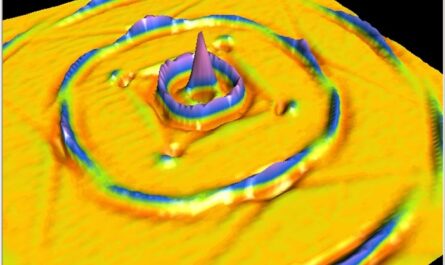NASA has achieved a remarkable feat by operating on both Earth and Mars simultaneously. Leveraging its presence on the two planets, the space agency is using the insights gained from its Martian helicopter, Ingenuity, to develop better helicopter blades for Earth and propel Ingenuity to even greater heights on Mars.
Teddy Tzanetos, the project manager for the Ingenuity Mars Helicopter and Mars Sample Recovery Helicopters, expressed his excitement, stating, “Our next-generation Mars helicopter testing has literally had the best of both worlds. Here on Earth, we have all the necessary instruments and immediate access to test new aircraft components. On Mars, we have the privilege of experiencing real off-world conditions that can never truly be replicated on Earth.”
Since its historic flight on another planet in April 2021, Ingenuity has consistently exceeded expectations. It broke an altitude record by soaring 46 ft (14 m) above the Martian surface in late 2022. In April of this year, it shattered its own record, reaching a height of 59 ft (18 m) during its 50th flight.
In a recent update, NASA announced that Ingenuity has now completed 66 flights—a significant achievement considering initial projections anticipated only five flights. The helicopter has also reached heights of 78.7 ft (24 meters), surpassing initial expectations, and set a speed record by flying at 22.3 mph (10 meters per second).
To achieve these impressive results, NASA has been refining the instructions sent to Ingenuity before each flight. The increased altitude has allowed the helicopter to observe more of the Martian landscape, reducing the confusion caused by the ground rushing past, which previously limited its speed.
Not only have these tests pushed Ingenuity to new performance levels, but they have also revealed valuable insights for future Martian helicopters. NASA engineers have observed 25% slower landing speeds, which could potentially lead to lighter landing gear for upcoming missions. Essentially, Mars is serving as a unique laboratory that enables researchers to understand the operations of motorized flying vehicles in off-Earth conditions.
Travis Brown, the chief engineer of Ingenuity at NASA’s Jet Propulsion Laboratory (JPL), emphasized the significance of these advancements, stating, “Over the past nine months, we have doubled our maximum airspeed and altitude, increased our rate of vertical and horizontal acceleration, and even learned to land slower. The expansion of Ingenuity’s capabilities provides invaluable data that can be utilized by mission designers for future Mars helicopters.”
Simultaneously, NASA has been conducting research on Earth to enhance helicopter technology. The engineers at JPL’s space simulator, measuring 25-feet wide and 85-feet tall (8 x 26 meters), have been testing carbon-fiber rotor blades that are four inches longer than those used by Ingenuity. This research paves the way for the development of larger, sturdier helicopters for future Mars missions. Additionally, the tests have helped resolve the vibration-causing turbulence associated with larger rotors at higher speeds.
Tyler Del Sesto, the deputy test conductor for Sample Recovery Helicopter at JPL, shared insights from the rotor blade tests, stating, “We spun our blades up to 3,500 rpm, which is 750 revolutions per minute faster than the Ingenuity blades have gone. These more efficient blades are now more than a theoretical exercise. They are ready to fly. And they’re ready to do so at the near-hypersonic speed of 0.95 Mach.”
NASA’s dual-planet presence has proven to be a catalyst for advancements in helicopter technology. By harnessing the unique conditions on Mars and conducting rigorous tests on Earth, the agency continues to push the boundaries of what is possible in the realm of aerospace engineering.
*Note:
1. Source: Coherent Market Insights, Public sources, Desk research
2. We have leveraged AI tools to mine information and compile it
Ravina Pandya, a content writer, has a strong foothold in the market research industry. She specializes in writing well-researched articles from different industries, including food and beverages, information and technology, healthcare, chemicals and materials, etc. With an MBA in E-commerce, she has expertise in SEO-optimized content that resonates with industry professionals.


 by
by 

